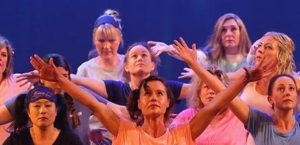
What is jazz dance? Part 1
By Lorraine Ansell | 08 April 2021
Welcome back to the stage dancers! We very much hope you have enjoyed your Easter break. Personally I indulged in my other passion that is chocolate. Now onto dance matters. And as we here at First Dance Studios look forward to warmer weather, what better way to start a series on jazz dance. Buckle up, there may be jazz hands as well. So best foot forward, let’s go!
What is jazz dance?
Jazz dance is a huge umbrella term for a variety of dance styles. Yes we are going to talk about history, yes we are going to look at our favourite jazz dance choreographers. And yes, we are going to isolate what makes jazz dance just so much fun! Dancing in the jazz style often has nothing to do with jazz music. We refer to jazz dance many times to refer to dance that is Broadway in style, pop and street styles as well. So how did this spectacular dance style start out?

Jazz Dance History
Jazz dance originated from African dance from around the 17th century. Both as a celebratory and ritual dance. The essence is that this dance style features improvisation and polyrhythms. Finding favour in the 1930’s Jazz dance, linked to jazz music developed into the dances that we would now see more in the Ballroom and Latin family. That is to say, structured, with key steps and combinations. So here the Shimmy, Charleston, Lindy Hop enter with swings, flicks and kicks.
What are the categories of jazz dance?
As we head into the 1950s and 60s cheorgraphers start to develop more dance styles. We’ll focus on those cheorgraphers later but suffice to say that jazz dance evolved with the popular musical trends of the time. Now we have a whole jazz dance family from street jazz, funk, contemporary, classical, show & broadway styles etc. The list grows and is often endless simply because of how we take it and develop it. This breakdown is a very broad brush stroke of what we know is a dance style that just zings with fun. More on these in part 2!
Classic Jazz
Contemporary
Commercial Dance Jazz
Latin Jazz
Afro-Jazz
Street Jazz

What are the characteristics of jazz dance?
Ok, get ready because jazz hands may enter stage left but let’s take a look at what makes up jazz dance. Firstly what separates a ballet movement from a jazz movement is those hips. Those really don’t lie because in jazz dance those hips roll with the tempo. If ballet is a form of flowing limb extension with intentional holds and strong almost locked knees then jazz dance is loose, more grounded and bouncier knees. Then across the jazz dance family we have; the isolation.
What is a dance isolation?
Here let’s take a moment and remind ourselves of what that is. An isolation in dance is simply isolating a limb such as a leg, hand (hello there jazz hands) or even an area such as a hip or left side of the body and moving it while everything else is static. The look and feel is to isolate and almost disjointed appearance. Often in Emma’s Theatre Jazz her warm up has an upper body isolation which takes me back to all things 80s dance and fitness! Where did I put that headband?
Next time on Jazz Dance
Join us next week as we’ll go through the jazz dance list, choreographers and jazz dance steps. Have a look at our jazz dance classes on the class page. Easy dances to pick up from home and with lots of different music styles from shows to pop and street. For street jazz dance styles with a body popping join Diana on Mondays. For commercial dance jazz styles with fun pop dance like no on is watching styles, then join in with Karen and Drop off and Dance. For contemporary dance classes with the creative Emily then check that out here.

To contact us for further information please do get in touch with us here.
Keep those Jazz Hands waving!
xx
